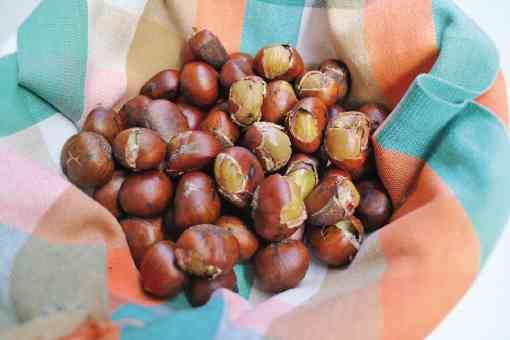
Sometimes we learn lessons from the most unexpected places.
For years I’ve been using a nutcracker to crack open roasted chestnuts. As many would surely agree, chestnuts are a delicious treat, especially at Christmas time, when street vendors would sell them smoking-hot straight from a rotating drum that roasts them evenly.
However, I don’t always get satisfactory results with a nutcracker. Often the chestnuts would crumble or they’d stick to the shells, making them hard to peel.
Some people, on the other hand, crack chestnuts with their teeth—which is a definite no-no, warns my dentist.
Then a few weeks ago, while shopping in Divisoria, I saw another, more practical way to open chestnuts. The street children gathered on a table were using a rock to open the chestnuts that someone had given them. I looked closer and saw that, after being pounded with a rock, the shells had just one single slit on the center, making it easy to extract the nuts from the shells—in one whole piece, too.
The next time I had chestnuts at home, I tried their method. Because I couldn’t find a good rock at home, I used an unopened can of condensed milk instead. One whack on the nuts and the shells cracked open beautifully. I could extract the nuts whole, or at least in halves, from the shells, making them more delectable to eat.
To heat the chestnuts, I put them in the microwave for a few seconds—and they came out piping hot, just as if they had just come out of the vendors’ rotating drum.
Try this method of opening and heating chestnuts at home, so you can serve your guests hot chestnuts this Christmas. And if they ask how you prepared the chestnuts, you can tell them the story of the street children of Divisoria, who know instinctively how to crack open a chestnut.
Roasted chestnuts
½ – 1 kilo roasted chestnuts (store-bought)
1 clean cutting board
1 sturdy, heavy can, unopened (see tips)
Position one or two chestnuts on the cutting board. Hold the heavy can on both hands. Lift up the can and pound the chestnuts with one whack. The chestnuts should crack open slightly.
Repeat with as many chestnuts as you would like to roast (you don’t have to roast the entire ½ kilo all at once).
Gather the slightly opened chestnuts and place them in a microwave safe dish (you may have to do this in batches). Microwave on high for 25 to 30 seconds. Remove the chestnuts from the microwave and transfer them to a bowl lined with a clean dish towel. Fold the dish towel close to keep the chestnuts warm.
You can also serve the chestnuts in a bread basket lined with a clean dish towel or cloth napkin. Keep the basket covered so the chestnuts stay warm. Serve immediately.
Cook’s tips:
Use a wooden or plastic cutting board. Do not use a glass cutting board as it may crack.
Make sure the cutting board is clean. Do not use the same cutting board that you use for raw meat or fish.
Examples of sturdy heavy cans that you can use: a can of fruit cocktail, a can of Campbell’s soup or a can of condensed milk.
If you have a heavy rock or stone that has a flat surface, you can use that in place of the can.
Do not reheat chestnuts that have already been heated. Hence, microwave only enough chestnuts that will be consumed immediately.